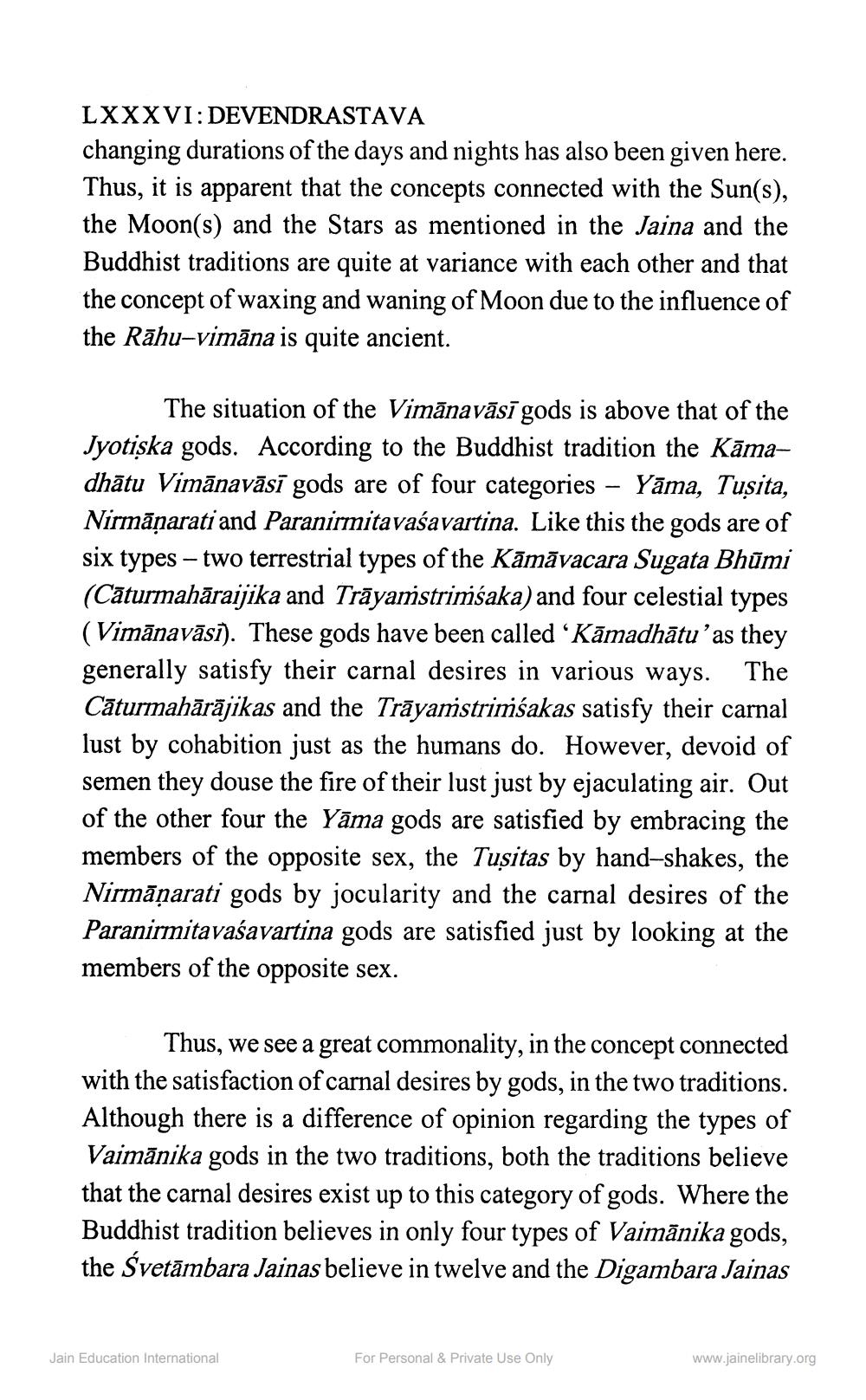________________
LXXXVI: DEVENDRASTAVA
changing durations of the days and nights has also been given here. Thus, it is apparent that the concepts connected with the Sun(s), the Moon(s) and the Stars as mentioned in the Jaina and the Buddhist traditions are quite at variance with each other and that the concept of waxing and waning of Moon due to the influence of the Rāhu-vimāna is quite ancient.
The situation of the Vimānavāsī gods is above that of the Jyotiska gods. According to the Buddhist tradition the Kāmadhātu Vimānavāsī gods are of four categories - Yāma, Tusita, Nirmāṇarati and Paranirmitavaśavartina. Like this the gods are of six types - two terrestrial types of the Kāmāvacara Sugata Bhūmi (Cāturmahāraijika and Trāyamstrimiśaka) and four celestial types (Vimānavāsī). These gods have been called 'Kāmadhātu' as they generally satisfy their carnal desires in various ways. The Cāturmahārājikas and the Trayamstrimsakas satisfy their carnal lust by cohabition just as the humans do. However, devoid of semen they douse the fire of their lust just by ejaculating air. Out of the other four the Yama gods are satisfied by embracing the members of the opposite sex, the Tusitas by hand-shakes, the Nirmāṇarati gods by jocularity and the carnal desires of the Paranirmitavaśavartina gods are satisfied just by looking at the members of the opposite sex.
Thus, we see a great commonality, in the concept connected with the satisfaction of carnal desires by gods, in the two traditions. Although there is a difference of opinion regarding the types of Vaimānika gods in the two traditions, both the traditions believe that the carnal desires exist up to this category of gods. Where the Buddhist tradition believes in only four types of Vaimānika gods, the Svetambara Jainas believe in twelve and the Digambara Jainas
Jain Education International
For Personal & Private Use Only
www.jainelibrary.org




